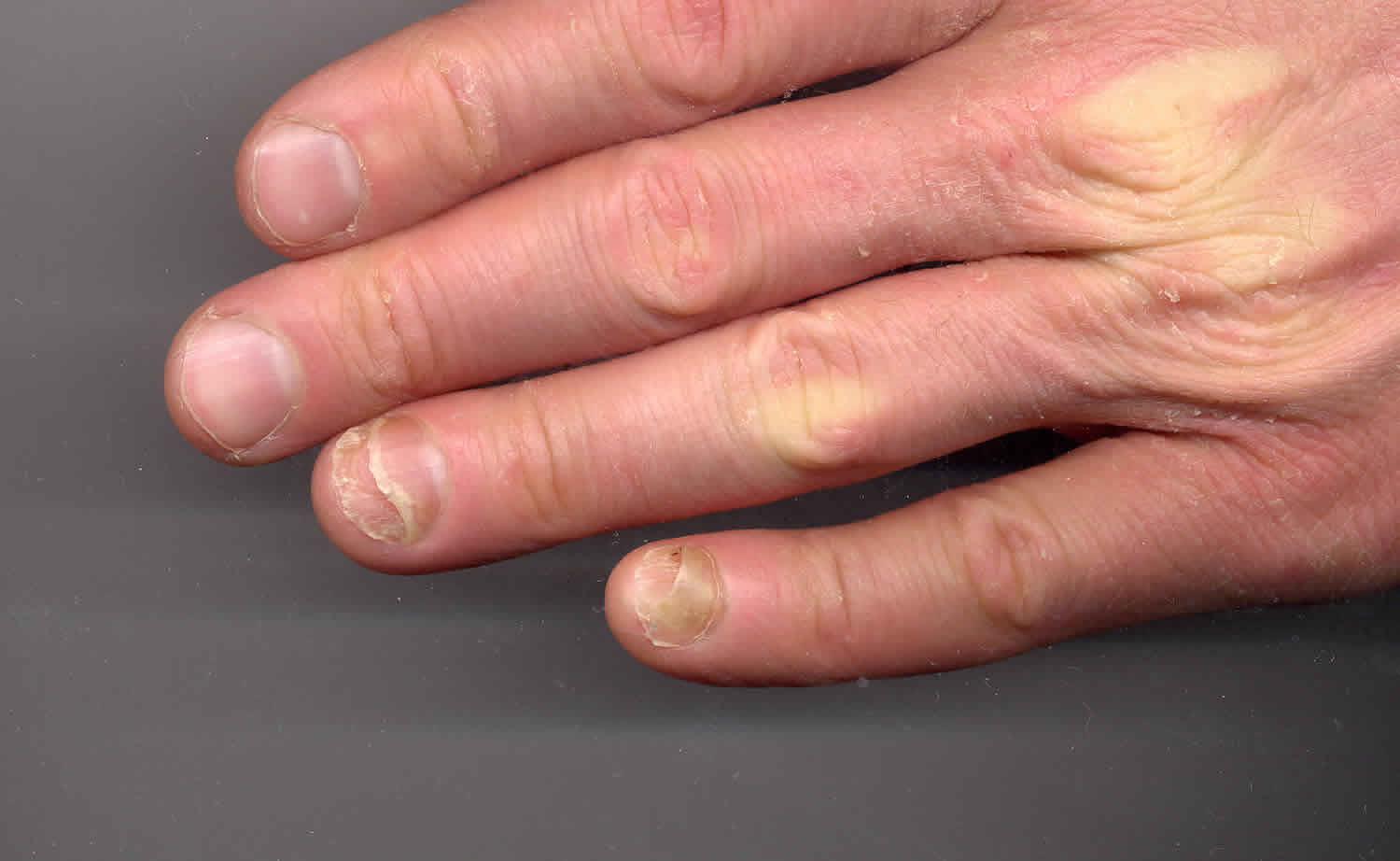What is onycholysis
Onycholysis is the medical term for when your nail separates from the skin underneath it. Onycholysis is the loosening or separation of a fingernail or toenail from its nail bed. Onycholysis usually starts at the tip of the nail and progresses back.
Onycholysis is a common nail disorder. People of all ages, sex and race can get onycholysis, although it is more frequently seen in female adults.
Onycholysis causes
Many things may cause onycholysis. Some of the most common causes are:
- Repetitive trauma, e.g. daily tapping of long fingernails on a keyboard or counter
- Overzealous manicure, e.g. manicure tools pushing beneath the nail to clear dirt and overuse of nail cosmetics
- Prolonged immersion of nails in water.
Other causes of onycholysis are listed below:
- Skin disease
- Psoriasis, dermatitis and less often, pemphigus vulgaris, porphyria cutanea tarda and others.
- Infection
- Dermatophyte fungus (i.e., Trichophyton rubrum, T. mentagrophytes infection)
- Yeast (Candida infection)
- Bacteria (Pseudomonas infection)
- Virus (Herpes simplex infection)
- Internal disease (uncommon)
- Amyloid and multiple myeloma,
- Anemia (iron deficiency),
- Diabetes mellitus,
- Erythropoietic porphyria,
- Hyperhidrosis,
- Hyperthyroidism,
- Hypothyroidism,
- Impaired peripheral circulation,
- Leprosy,
- Pellagra,
- Psoriatic arthritis,
- Reiter syndrome,
- Sarcoidosis,
- Scleroderma,
- Yellow nail syndrome due to chronic lung or sinus disease
- Drugs
- Tetracyclines
- Psoralens
- Fluoroquinolone antibiotics
- Chlorpromazine
- Oral contraceptives
- Some anti-cancer treatments
- Other
- Congenital onycholysis,
- Hereditary partial onycholysis,
- Idiopathic acquired onycholysis,
- Hereditary distal onycholysis,
- Foreign body implantation,
- Contact allergy to nail glue (acrylate)
Onycholysis signs and symptoms
Signs and symptoms of onycholysis
- Irregular border between the pink portion of the nail and the white outside edge of the nail when the nail has lifted from the nail bed.
- Larger portion of the nail is opaque, can be whitened or discolored to yellow or green.
- Discoloration underneath the nail may occur as a result of secondary infection.
- Depending on the cause, the nail may collect thickened skin underneath the edge of its nail plate and the nail surface may become deformed with pits or indentations.
- It is usually painless as the separation occurs gradually. Pain may occur if nail is further detached from the nail bed as result of trauma or if active infection sets in.
Onycholysis diagnosis
Because so many things can cause onycholysis, your doctor may examine you to check for other skin conditions or medical problems such as thyroid disease. If a fungal infection is suspected, your doctor may clip the nail and scrape a sample of tissue from beneath the nail plate for laboratory testing.
Onycholysis treatment
Treatment of onycholysis depends on the cause of the problem. Eliminating or correcting the predisposing cause is the best treatment. For example, treatment of hyperthyroidism will allow the nails to regrow normally and nail infections can be treated with antimicrobials.
The portion of nail that has separated will not reattach to the nail bed and you will have to wait until the nail is fully regrown for the condition to be completely gone. Fingernails take 4-6 months to fully regrow whilst toenails may take twice as long.
To prevent deterioration or recurrence of onycholysis after it has cleared up:
- Clip the affected portion of the nail, and keep the nails short.
- Avoid injuring the affected nail, and keep the nail bed dry.
- Avoid exposure to contact irritants such as nail enamel and enamel remover or solvents and detergents.
- Wear light cotton gloves under vinyl gloves for wet work.





